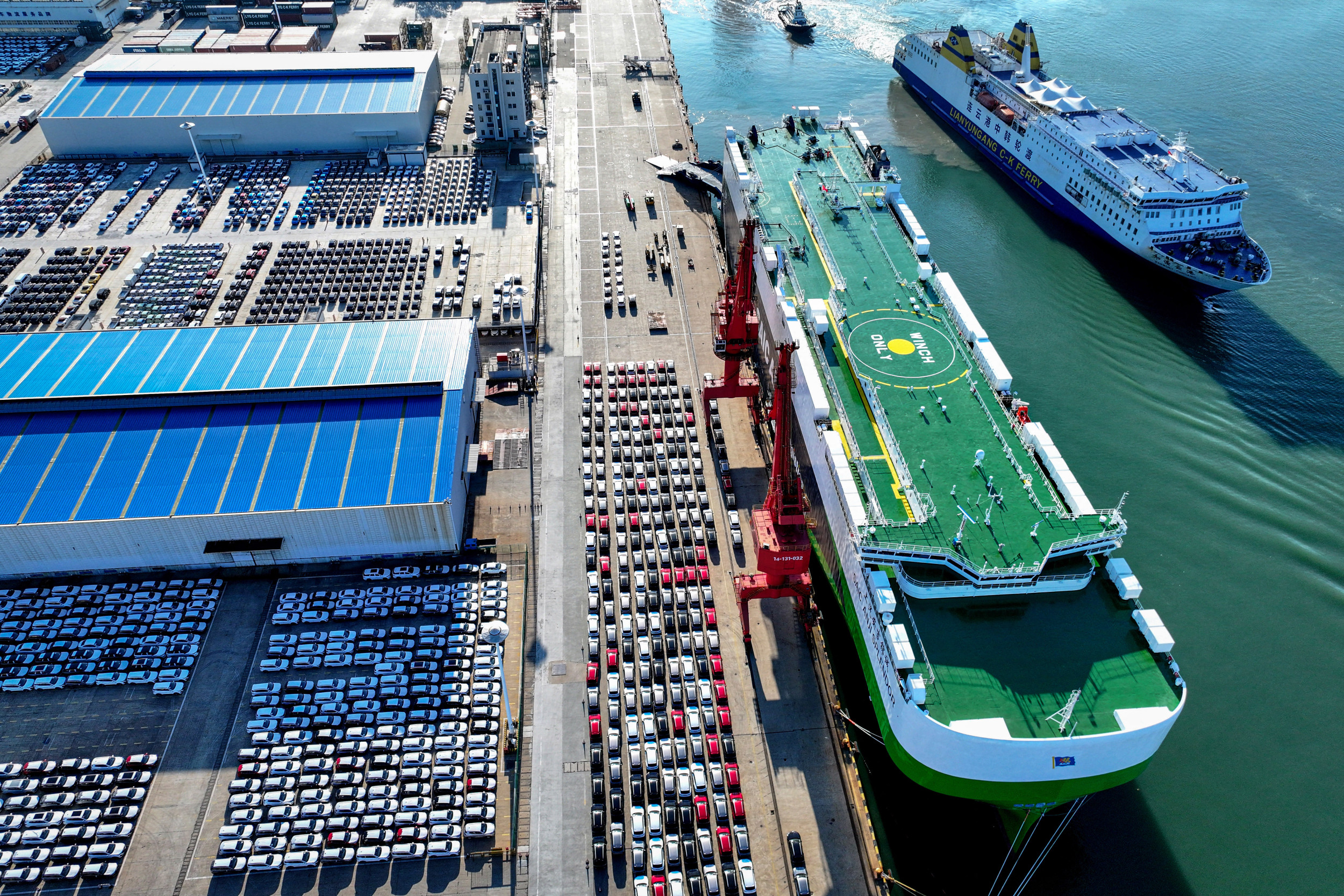Trade tiffs between the world’s second-largest economy and the West continue to intensify this year, with Beijing in recent months hitting back with its own protectionist measures amid concerns that low-cost Chinese goods are outcompeting local markets.
China on Tuesday announced an “anti-discriminatory” investigation against Canada after Ottawa last week announced that it would slap higher tariffs on Chinese goods.
These will include 25 percent duties on Chinese steel and aluminum. Canada also followed in the U.S.’s footsteps by announcing a 100-percent tariff on Chinese electric vehicles (EVs). Canadian Prime Minister Justin Trudeau said these tariffs are in response to Beijing’s failure to meet global standards on labor and the environment.
China’s Commerce Ministry told reporters Tuesday that it would file a dispute settlement at the World Trade Organization (WTO). The ministry also announced an anti-dumping probe into Canadian canola products, citing a 170-percent year-on-year increase of such imports that is driving down prices and hurting Chinese rapeseed-related industries.
The Chinese embassy in Washington, D.C., did not immediately respond to a written request for comment.
AFP via Getty Images
U.S.-China trade tensions further escalated in May when the Biden administration upheld tariffs on $300 billion worth of Chinese products, many of which were introduced during the Trump era.
American Trade Representative Katherine Tai said that the 100 percent duties on Chinese EVs were part of a broader effort to deter China’s “unfair technology transfer-related policies” that hurt American businesses and workers.
However, the Biden administration last week announced it had delayed its final decision on the higher additional tariffs on Chinese EVs, batteries, solar cells, and chips after previously stating the announcement would come by the end of August.
The U.S. continues to “develop the final determination regarding proposed modifications of the actions” it will take on the Chinese products, a spokesperson for the Office of the U.S. Trade Representative said in a statement.
Thibault Denamiel, an associate fellow at the Center for Strategic and International Studies, a think tank based in Washington, D.C., believes the delay is related to a balancing act as the November 5 elections approach.
On the one hand, Democrats want to appear strong against China. “But there is so much pushback from industry and from domestic stakeholders who argue that the new tariffs are going to be destructive to the U.S. economy, so kicking the can seems like an attractive option right now,” Denamiel told radio network Voice of America.
The European Union took a major step in its crackdown on alleged Chinese overcapacity in June.
The European Commission, the 27-member bloc’s executive branch, announced provisional duties of up to 37.6 percent on Chinese EVs, citing the country’s state subsidies that give China’s automakers an unfair advantage in the European market. In response, China filed a formal complaint with the WTO, accusing the EU of violating international trade rules.
The European Commission said last month it had adjusted these duties to a slightly lower rate of 36.3 percent following consultations with industry players. Major Chinese automakers such as BYD now face duties of 17.4 percent, while Geely and SAIC Motor face tariffs of 19.3 percent and the maximum 36.3 percent, respectively. Non-cooperating manufacturers will face tariffs as high as 38.1 percent.
Beijing criticized the move, accusing the EU of politicizing trade and using environmental goals as a pretext for protectionism.
Though tariffs loom, China’s EV sector is thriving. BYD reported a 30 percent increase in sales year-on-year, with hybrid models seeing the most growth at 48 percent, outperforming the 11 percent rise in sales of battery-only electric cars.
The global market share of the East Asian country’s EV exports skyrocketed from 4.2 percent in 2018 to 35 percent in 2023. Almost one-fifth of EVs purchased in Europe last year were manufactured in China, according to the European Federation for Transport and Environment.
China’s response to these Western measures has not been limited to EVs. In August, Beijing launched an anti-dumping investigation into polyoxyethylene (POM) copolymers imported from the U.S., EU, Japan, and Taiwan. This investigation was initiated after Chinese producers filed complaints, claiming these plastics were being dumped at unfairly low prices, hurting the domestic market.
Newsweek reached out to the Canadian Trade Ministry, European Commission, and U.S. Department of Commerce via emailed request for comment.
